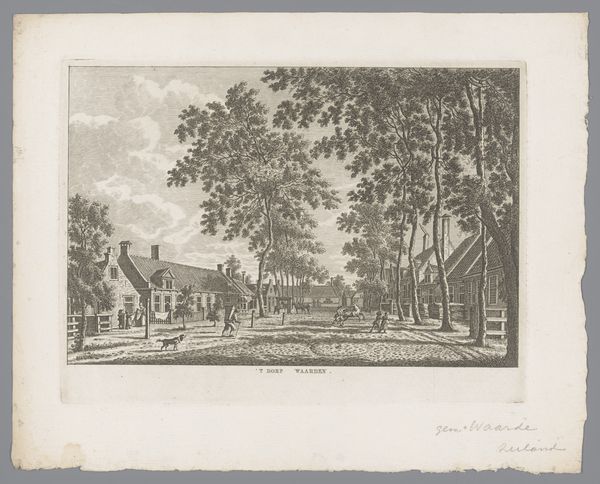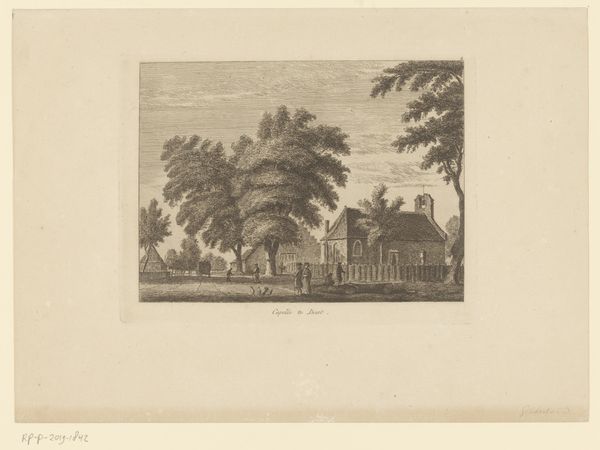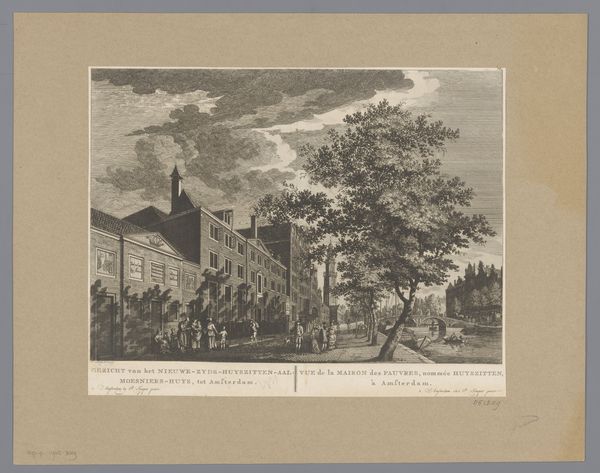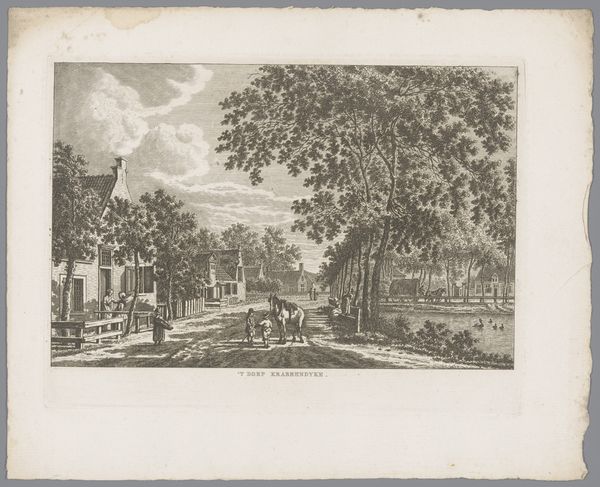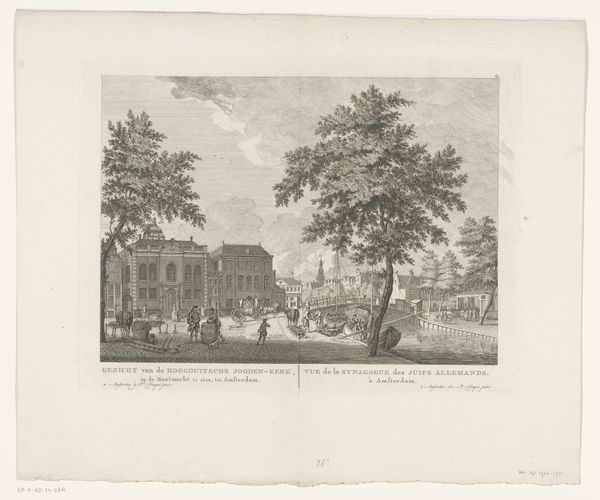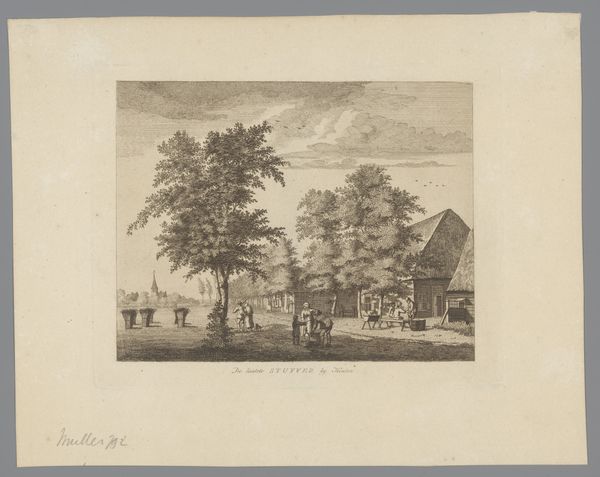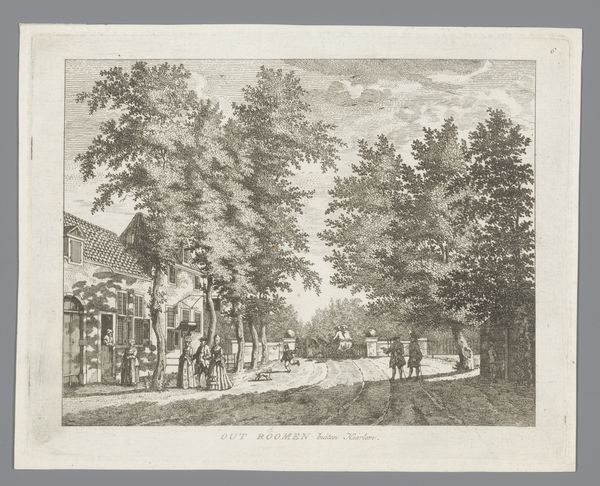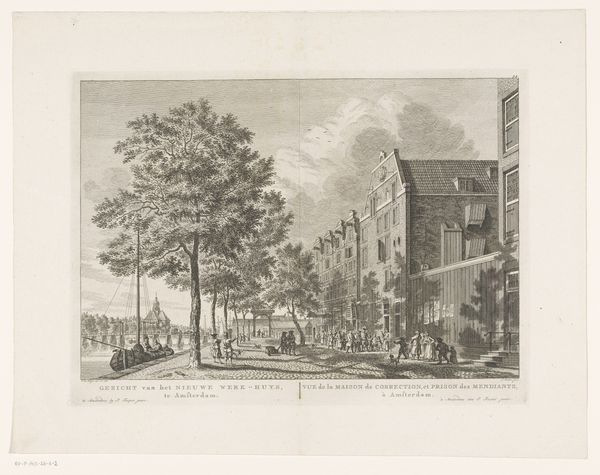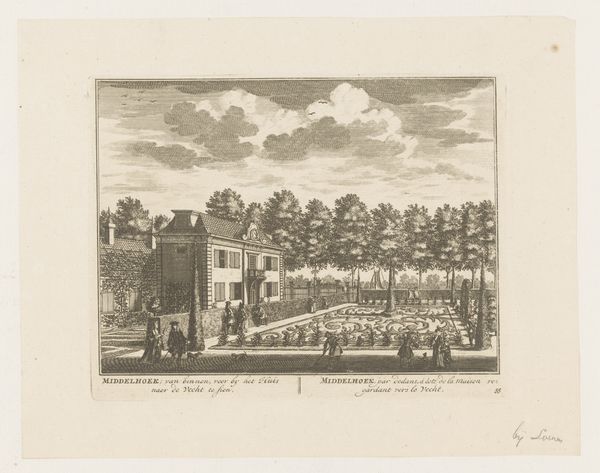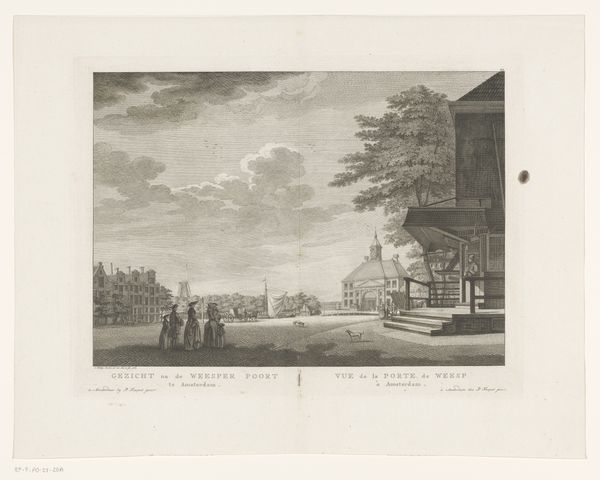
Gezicht op de poort van de voormalige Amsterdamse Schouwburg aan de Keizersgracht Possibly 1760 - 1783
0:00
0:00
simonfokke
Rijksmuseum
print, paper, engraving
#
dutch-golden-age
# print
#
landscape
#
paper
#
cityscape
#
engraving
Dimensions: height 281 mm, width 385 mm
Copyright: Rijks Museum: Open Domain
Curator: Gazing upon this print, what do you sense, feel? I’m drawn to how alive and intimate Fokke makes a public place seem. Editor: There's a hushed anticipation hanging in the air. Despite all the activity, with people milling around, carriages lined up, the whole scene possesses this sort of muted quality, like a stage set waiting for the curtain to rise. Curator: Yes, a certain drama! This is "View of the Gate of the Former Amsterdam Theatre on the Keizersgracht," potentially made between 1760 and 1783, by Simon Fokke. What grabs me is how he uses such detailed engraving to depict a bustling urban scene. Editor: Fokke definitely captured the social rituals of the era. I find myself pondering what it meant to participate in the spectacle of theater-going. The social status on display! Each carriage, each carefully chosen outfit… a silent play within the play. Curator: Absolutely. The theatre itself, of course, becomes a stage for social performance. Think of the gate’s architectural design, acting as a kind of proscenium arch itself. The positioning of the tree adds something almost painterly to an otherwise linear depiction. Editor: It softens the scene and adds depth, almost concealing and revealing in equal measure. It speaks to the tension between the public façade and the private self—both present in this little window into 18th century Amsterdam. Were performances here revolutionary in any way? Curator: Interesting you ask that. This theatre occupied a particularly fraught political position given the history of censorship in the city. The types of plays performed, who attended them, and even images like this were active parts of negotiating public life. The theatre also served as a symbol. A place for everyone, potentially excluding those who were not well-off enough. Editor: So, looking beyond its surface beauty, Fokke's print hints at layers of social and political tensions humming beneath the seemingly genteel surface of Amsterdam's theatre scene. Thank you for this deeper look at this scene. Curator: It gives a new resonance to my feelings about the play being about to start; you never know what’s going to happen when the curtain rises.
Comments
No comments
Be the first to comment and join the conversation on the ultimate creative platform.

